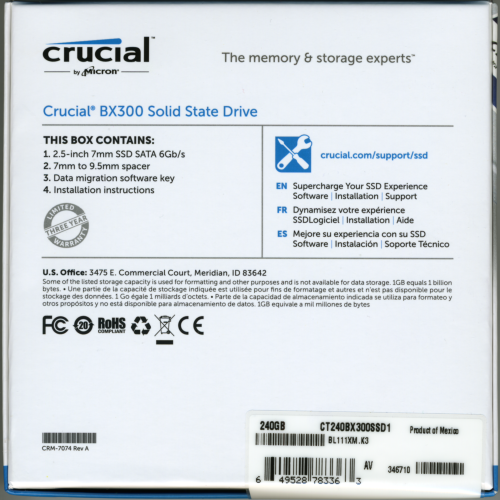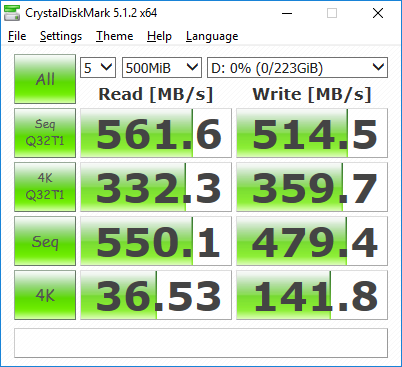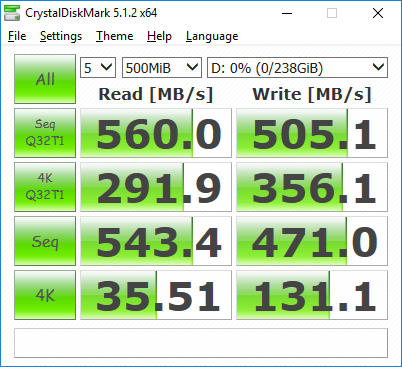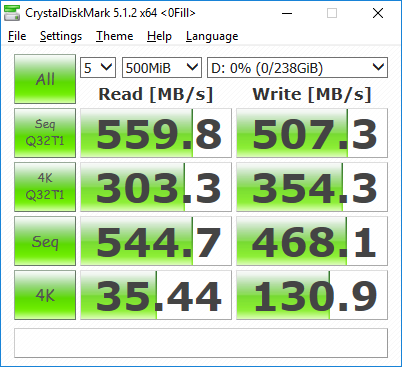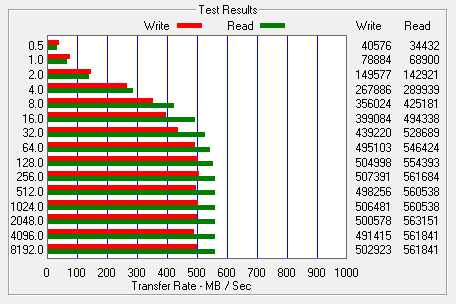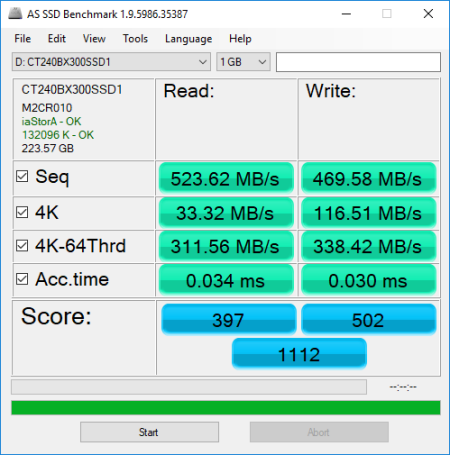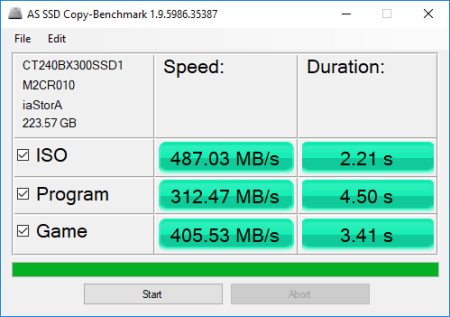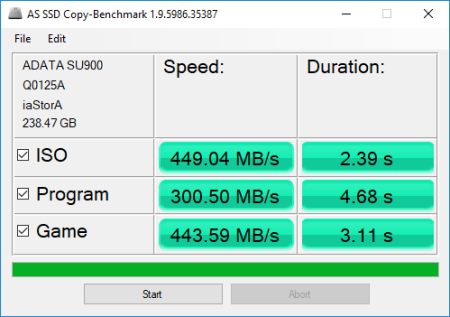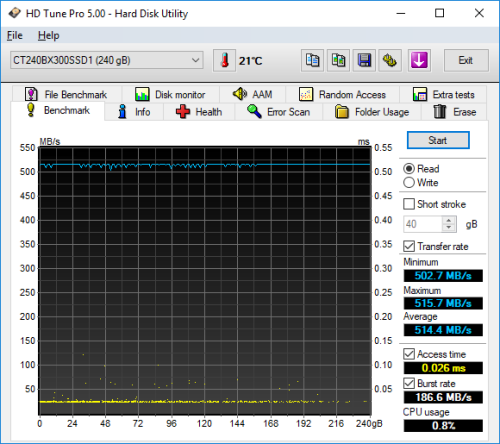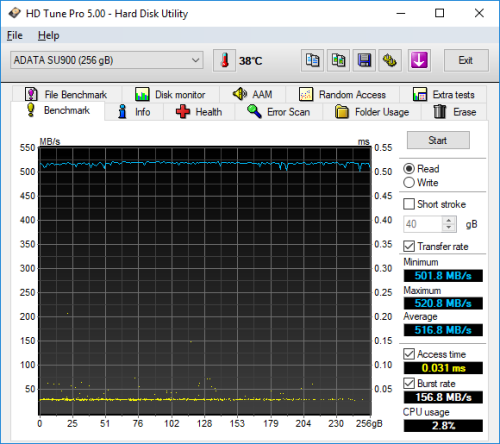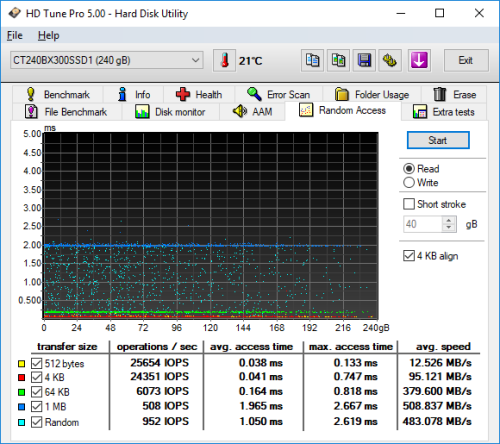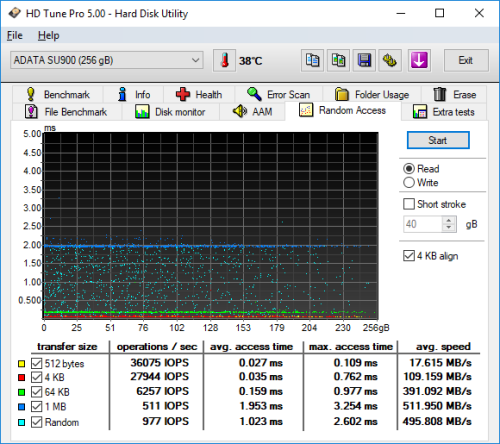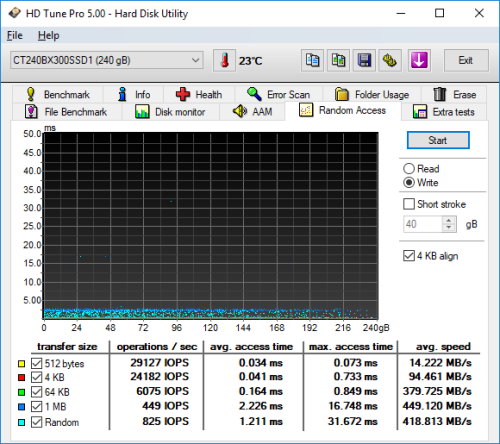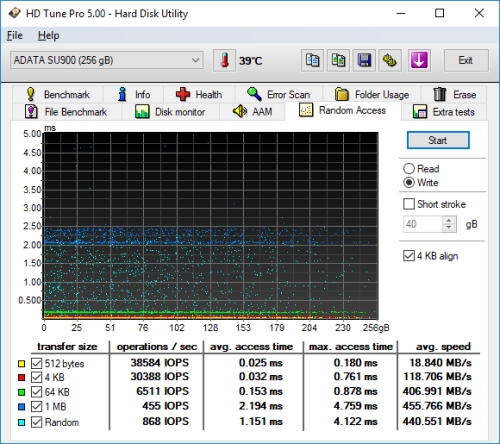

Model: Crucial BX300 240GB Solid State Drive
Manufacturer: Crucial
Provided By: Crucial
Crucial is a global brand of Micron Technology, Inc., one of the largest memory and flash storage manufacturers in the world. The company's product lineup includes award-winning solid state drives (SSDs) and computer memory upgrades (DRAM) for more than 50,000 systems. These products have been qualified and approved by major original equipment manufacturers and every single module has been rigorously tested at the component and module level. Each SSD also undergoes over a thousand hours of prerelease validation testing and hundreds of qualification tests to ensure optimal reliability and performance.
Earlier this year, Crucial launched its third generation BX-series SSD, the BX300. Aimed at the everyday consumer and DIYer looking to upgrade to an SSD, the BX300 offers substantial yet affordable performance gains compared to a typical hard drive. Powered by Silicon Motion's SM2258 controller and available with up to 480GB of Micron's 3D MLC NAND, the drive delivers 555 MB/s read and 510 MB/s write speeds for faster boot times, quicker application launches and better overall system performance. The BX300 is also 45 times more energy efficient than a typical hard drive, allowing users to run their systems longer, using less power.
The BX300 is available in 120GB, 240GB and 480GB capacities. For this review, Crucial sent us the 240GB version of the drive which is capable of delivering up to 555 MB/s sequential read and 510 MB/s sequential write speeds as well as up to 84,000 random read and 90,000 random write IOPS.
| Crucial BX300 240GB Solid State Drive | |||||||||||||||||||||||||||
General Specifications
Performance
Reliability
Environmental
Other Features
|
Needless to say, this is only a taste of what the BX300 has to offer. To give you an idea of what to expect, we'll take a closer look at Crucial's new SSD and then see how well it performs. Does the BX300 have what it takes? More importantly, is it the best bang for your buck? Keep reading as we find out.
The BX300 comes in a small, blue and white box. While there aren't a lot of technical details, the packaging provides basic information like the drive's capacity and a list of the box's contents. Inside, you'll find the SSD, a mounting spacer for use with traditional 9.5mm drive bays, installation instructions and a small piece of paper with a software activation key for Acronis True Image HD.

Physical Features:
The BX300 looks very similar to Crucial's other 2.5-inch SSDs. The outer casing is made entirely out of metal and is covered by a grey, textured finish. The top of the drive also has a large, blue and gray sticker showing that it is part of Crucial's BX series.


The BX300 uses Silicon Motion's SM2258 controller. This customizable turnkey controller solution is powered by a 32-bit RISC CPU and is equipped with a 4-channel flash interface that supports up to 32 NAND flash devices. The SM2258 also offers support for real-time full drive encryption and the TCG Opal protocol, but, for whatever reason, they are not enabled on the BX300.


For the 240GB version of the BX300, Crucial opted to use Micron's 256Gb 3D MLC NAND flash. Looking at the picture above, you can see that there are four NAND flash packages on either side of the PCB. The drive also has a 256MB Micron LPDDR3 memory chip that is used for caching.
The test system used in this review is equipped with an Intel Core i7-6700K CPU, GIGABYTE GA-Z170X-UD3 motherboard, 32GB (16GB x 2) of Crucial Ballistix Sport LT DDR4 memory, Samsung 960 PRO 512GB SSD and a GIGABYTE GeForce GTX 1060 WINDFORCE OC 6G graphics card. For the operating system, I installed a fresh copy of Windows 10 Enterprise.
To test the performance of Crucial's BX300 SSD, I ran a series of benchmarks using CrystalDiskMark, HD Tach RW, ATTO Disk Benchmark, AS SSD, HD Tune Pro, Anvil's Storage Utilities, Iometer and PCMark 8. For comparison, I've also included test results from the ADATA Ultimate SU900, Plextor S3C, Toshiba OCZ VX500, ADATA Ultimate SU800, Plextor S2C, Crucial M300, Plextor M7V, PNY CS1311, OCZ Trion 150, PNY CS2211, Plextor M6V, Crucial BX200, OCZ Trion 100, Kingston HyperX Savage, Crucial MX200, OCZ Vector 180, Kingston BX100, Samsung 850 EVO M.2, Samsung 850 EVO mSATA, AMD Radeon R7, Silicon Power Slim S80, Samsung SSD 850 EVO, OCZ ARC 100, SanDisk Ultra II, Crucial MX100, SanDisk Extreme Pro and Samsung SSD 850 PRO.
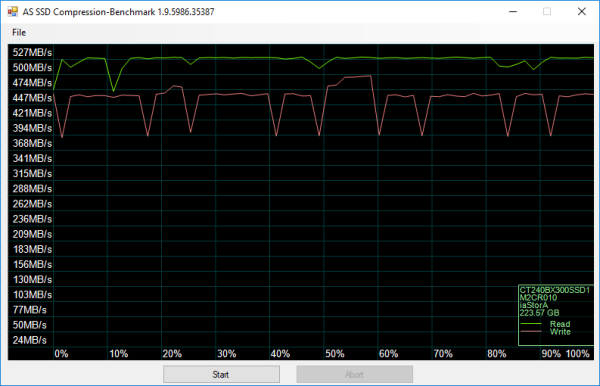
As I mentioned earlier, the BX300 is based on SMI's SM2258 controller chip. Looking at the screenshot above, you can see that it performs equally well with both incompressible (0%) and compressible (100%) data.
CrystalDiskMark 5.1.2:
First, I ran a few quick tests using CrystalDiskMark. This benchmark tool measures the performance of a storage device by testing its sequential read and write speeds as well as its random read and write speeds using blocks 512K and 4K in size.
According to Crucial, the 240GB version of the BX300 is capable of reading at 550 MB/s and writing at 510 MB/s when tested with CrystalDiskMark. Looking at the screenshot above, you can see that the drive had no problems reaching these speeds in the sequential read and write tests.
The BX300 performed equally well when using highly compressible 0x00 (0 Fill) data. This time around, the drive was able to read at 561.7 MB/s and write at 514.2 MB/s.
HD Tach RW 3.0.4.0:
Next, I used HD Tach to test the BX300's read, write and burst speeds as well as its seek times and CPU usage.
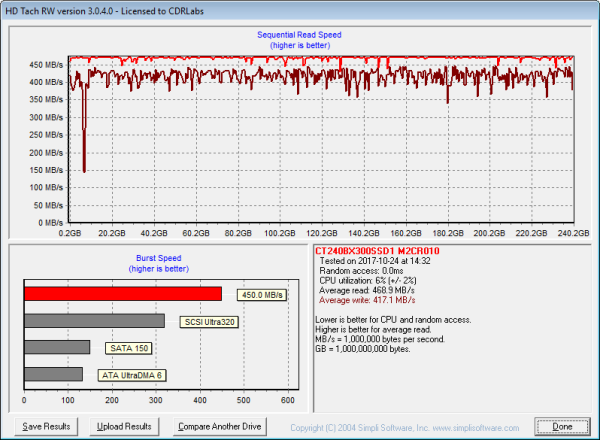
Looking at the screenshot above, you can see that the BX300 had average read and write speeds of 468.9 MB/s and 417.1 MB/s respectively, as well as a burst speed of 450.0 MB/s.
ATTO Disk Benchmark 2.46:
I also used ATTO Disk Benchmark to test the BX300's sequential read and write speeds. The tests are run using blocks ranging in size from 0.5KB to 8192KB and the total length set to 256MB.
When tested with ATTO, the BX300's read speeds topped out at about 561 MB/s and its write speeds at 505 MB/s.
AS SSD:
AS SSD is a benchmark designed specifically for solid state drives. The application contains five synthetic tests which are used to determine the sequential and random read and write performance of a drive.
AS SSD also includes a copy benchmark. This test copies an ISO (two large files), program (many small files) and game (small and large files), returning the speed and duration of each.
HD Tune Pro 5.00:
Next, I ran a series of tests using HD Tune Pro. This hard disk utility measures a drive's performance by testing its sequential read and write speeds as well as its access time, burst rate and CPU usage. For this review, I'm also going to use it to benchmark the BX300's random read and write speeds, random access times and the number of operations per second.
The BX300 performed fairly well when benchmarked with HD Tune. The drive had average read and write speeds of 514.4 MB/s and 450.1 MB/s, respectively, and a burst rate of 186.6 MB/s when reading.
When writing 4KB blocks, the BX300 reached 24,182 IOPS and had an average speed of 94.461 MB/s. The drive was slightly faster when reading, reaching 24,351 IOPS with an average speed of 95.121 MB/s.
Anvil's Storage Utilities:
Anvil's Storage Utilities is another new benchmark designed with SSDs in mind. The standard storage benchmark measures a drive's performance by testing its transfer speeds, access times and IOPS.

Iometer:
Lastly, I ran a series of tests using Iometer. This tool can be configured to benchmark a number of things. In this case, I used it to measure the BX300's read and write speeds and the number of operations per second. The tests were run using random bytes and a queue depth of 3.

The BX300's performance was very similar to what we saw in our other tests. The drive was able to read at 534.10 MB/s and write at 485.03 MB/s.

The BX300 also performed surprisingly well when doing random reads and writes. In our tests, the drive was able to read at 138.95 MB/s and write at a blazing 316.74 MB/s.

According to Crucial, the 240GB BX300 is capable of 84,000 IOPS when reading and 90,000 IOPS when writing 4K blocks. In our tests, the drive reached 35,572 random read IOPS and 81,087 random write IOPS. As with most drives, the BX300 performed better at higher queue depths. With the queue depth set to 32, it reached 81,550 random read IOPS and 84,395 random write IOPS.
Vantage PCMark 8 - Storage Test:
PCMark 8 is a complete benchmark for Windows. It includes five benchmark tests, each designed around a specific scenario. The storage benchmark measures drive performance using real-world traces recorded from Adobe Creative Suite, Microsoft Office and a selection of popular games.
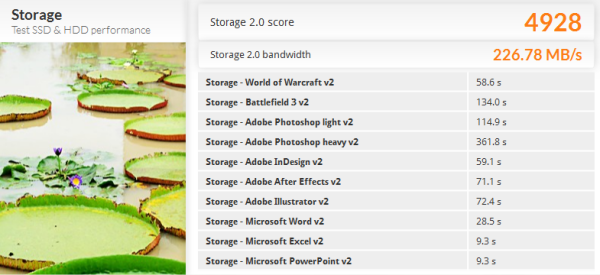
PCMark 8 also includes a consistency test which measures the performance consistency and degradation tendency of a storage system. The test reports the performance level at the start, the degraded steady-state and the recovered state as well as the number of iterations required to reach them. For this test, we are focusing on the Adobe Photoshop (Heavy) trace and will look at both the bandwidth and latency of the drive
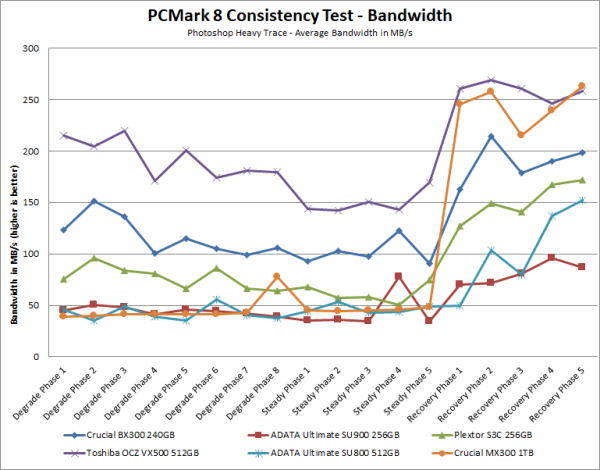

The BX300 did fairly well throughout PCMark's consistency test. While not as fast as the Toshiba OCZ VX500, it performed better than the ADATA Ulimate SU900 and Plextor S3C throughout the degradation and steady state phases. The BX300's performance also increased during the recovery phase, topping out at about 214 MB/s.
TRIM Performance:
While SSD's offer many benefits, there are some downsides to using flash memory. One of the biggest issues people run into is performance degradation. Over time, an SSD will run out of fresh blocks and will have to write over data the file system has marked as deleted. This procedure is very complicated and can slow an SSD's write speeds considerably.
To fix this problem, most manufacturers have added TRIM support to their SSDs. The TRIM command allows an operating system, such as Windows 7, to tell an SSD which data blocks are no longer in use. Using this information, the drive pro-actively erases these blocks and adds them to the free block pool.
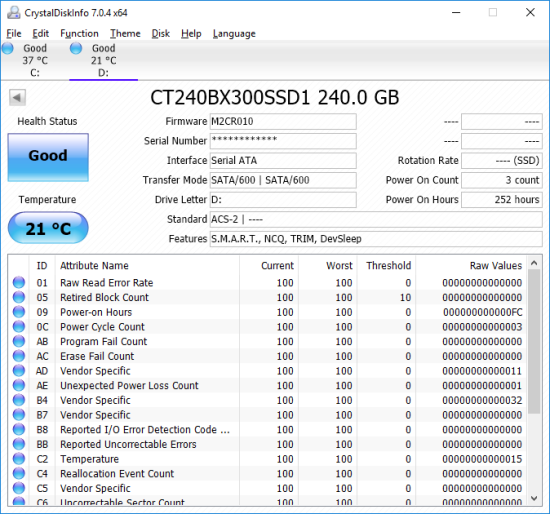
To test the BX300's TRIM and garbage collection functions, I first put the drive in a "dirty" state. I used Iometer to fill 80% of the drive and then ran a random write test for 30 minutes. This had little impact on the BX300's read speed. However, its average writing speed dropped to 119.00 MB/s.

Crucial BX300 - Dirty
To see how well the BX300 could recover, I let the computer sit for about 30 minutes and then reran the test. The drive wasn't able to reach the factory fresh performance shown in our earlier tests. However, its average write speed climbed up to 272.72 MB/s.
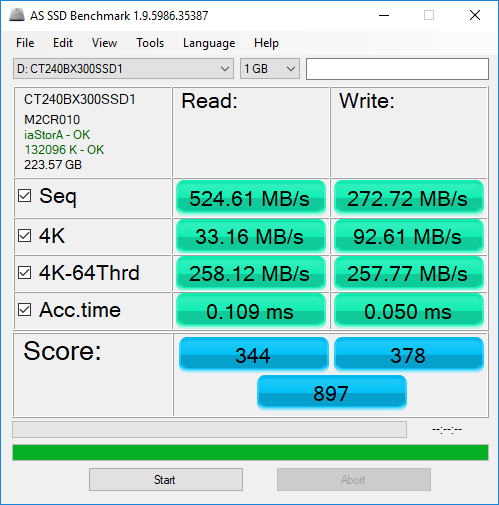
Crucial BX300 - After TRIM
Lastly, I used Parted Magic to perform a secure erase on the BX300. With the drive wiped clean, it had average read and write speeds of 523.18 MB/s and 473.57 MB/s, respectively.
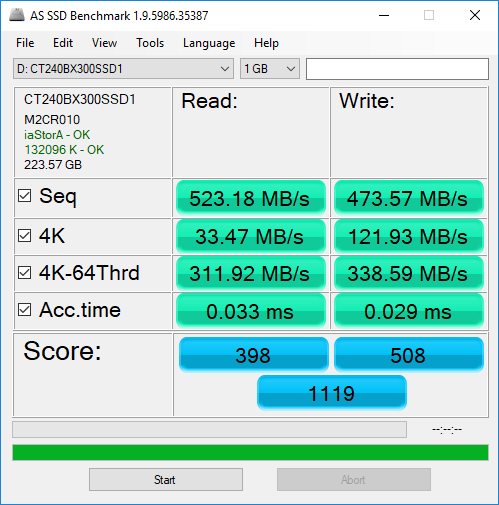
Crucial BX300 - Secure Erased
Final Thoughts:
Crucial's BX300 SSD is a great choice for the consumer looking for an easy and affordable way to improve the performance of their existing desktop or notebook computer. The drive combines Silicon Motion's SM2258 controller with Micron's 3D MLC NAND to deliver a fast, responsive computing experience at a price that won't break the bank. In our sequential read and write tests, the BX300 was able to read at speeds as high as 561 MB/s and write at speeds in excess of 505 MB/s. It also did very well in our random write tests, producing more than 81,000 IOPS at low queue depths.
With its lower price tag, it shouldn't be too surprising that the BX300's feature set isn't as extensive as Crucial's MX-series SSDs. The drive covers the basics by offering support for thermal monitoring, active garbage collection, TRIM and Device Sleep, but lacks some of Crucial's more advanced technologies like Data Defense and Redundant Array of Independent NAND (RAIN). The BX300 doesn't offer support for hardware based encryption either. This probably won't be an issue for the average consumer. However, if data security is a concern, Crucial's MX300 SSD may be a better choice.
The Crucial BX300 is available now in 120GB, 240GB and 480GB capacities. Prices on Amazon.com currently range from $60 up to $145, with the 240GB version reviewed here retailing for about $88.

Highs:
- Available in 120GB, 240GB and 480GB capacities
- Silicon Motion SM2258 controller
- Micron 3D MLC NAND
- Good sequential and random read and write performance
- Supports TRIM, SMART and active garbage collection
- DEVSLP power mode
- Works with Crucial's Storage Executive software
- Includes 9.5mm spacer and data migration software key
- Affordably priced
- 3 year warranty
Lows:
- Not available in higher capacities
- Does not support hardware based encryption

